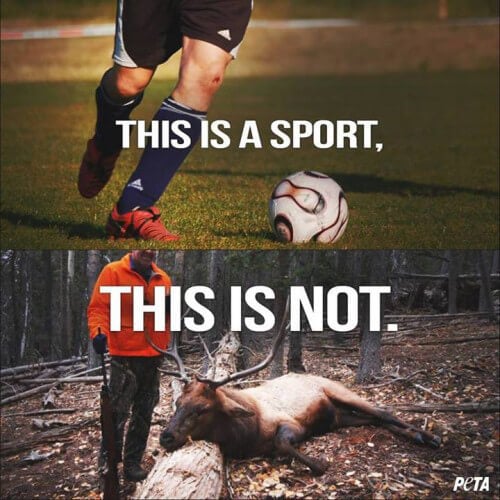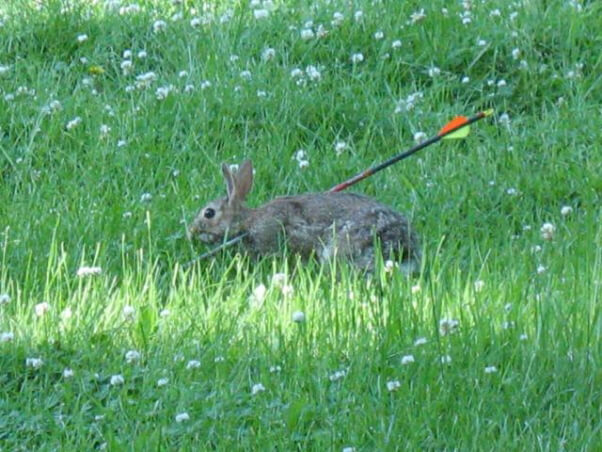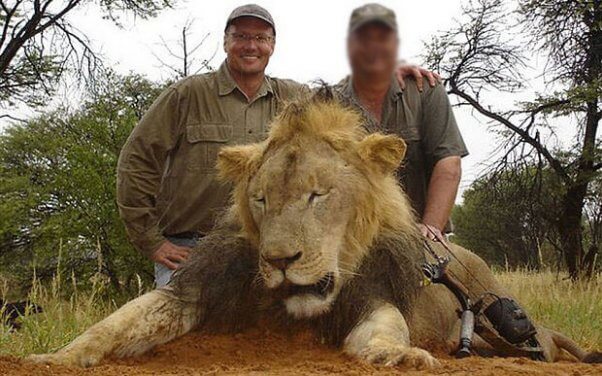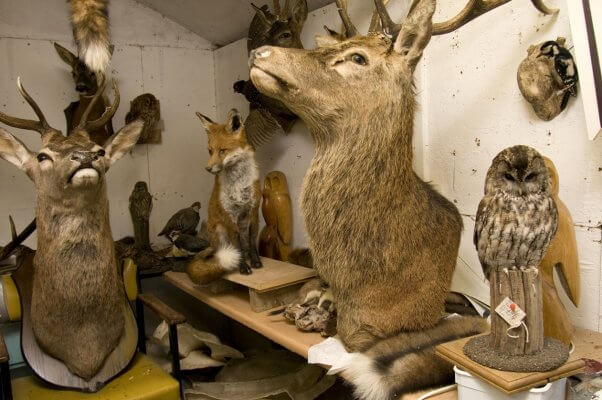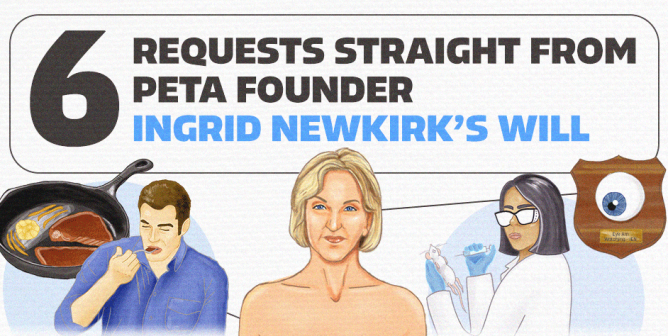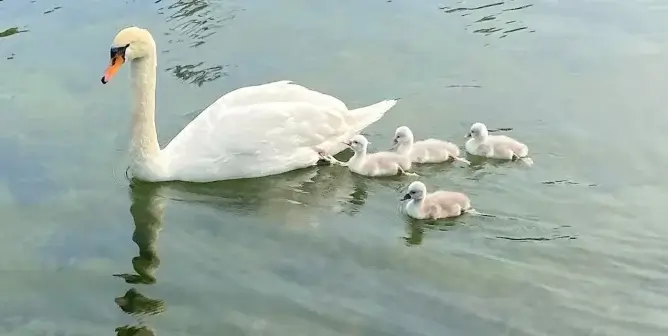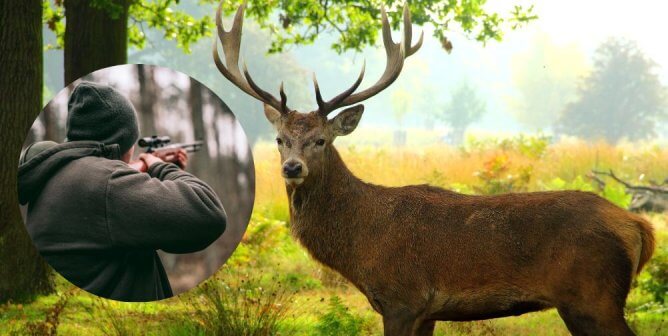7 Reasons Why Trophy Hunters and Sport Hunters Are One and the Same
As Walter Palmer, Tess Talley, Darren Carter, Aaron Raby, and many other now-infamous hunters have discovered, most of the world doesn’t look kindly on trophy hunting. Faced with this worldwide backlash, the “sport” hunters who usually go after less exotic animals are trying to distance themselves from their widely condemned counterparts. But there is little difference between people who kill elephants, rhinoceroses, giraffes, lions, and buffalo for fun and those who find amusement in gunning down deer, squirrels, foxes, coyotes, turkeys, and bears.
A true sport involves an even competition between two willing participants. When one side has all the equipment and all the advantages and the other side doesn’t even realize that he or she is involved and dies in the end, no, that’s not a sport.
Here are seven reasons why trophy hunters and sport hunters are the same:
1. They Cause Unnecessary Suffering
We were all furious when we learned that Walter Palmer made Cecil suffer for 10 to 12 hours before finally ending the injured lion’s misery. But that same scenario plays out every day during hunting season.
Bowhunters wound but don’t kill the deer they hit more than 50% of the time. A study by the Texas Parks & Wildlife Department found that for every deer killed outright by a bowhunter, at least one more escapes to suffer and die slowly. A member of the Maine BowHunters Alliance also determined that 50% of animals who are shot with crossbows are wounded but not killed. Twenty percent of foxes hit by hunters have to be shot again, and another 10% manage to escape—but “starvation is a likely fate” for them, a veterinarian concluded. And a biologist with the South Dakota Department of Game, Fish and Parks estimates that more than 3 million wounded ducks go “unretrieved” every year.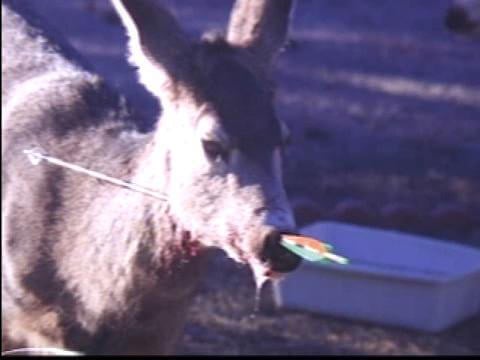
An article in Bowhunter Magazine titled “Bow Wounding Losses THE BIG MYTH” states:
“It is disquieting to know that we probably wound one deer for every animal harvested.”
And a guest editorial featured in Western Bowhunter called “Responsible Hunting Starts With You!” elaborates:
“Don’t talk to anyone about wounding animals, especially in public places or among non-hunters. … If you videotape your hunts, don’t show bloody kill scenes, rough handling of animals and animals struggling, kicking or quivering as they go down, to non-hunters or anti-hunters.”
2. They Tear Families Apart
Whether it’s a leopard for her coat or a deer for her flesh, whenever a hunter kills a female animal who is raising young, her babies will be orphaned and struggle to survive, starve to death, or be killed by predators. National Geographic explains that when hunters kill female elephants, it’s especially damaging to their herds because “the older females are the repositories of the herd’s collective wisdom. The matriarchs are the ones who know where to find water and food.” For animals such as wolves and geese who mate for life and live in close-knit family units, hunting can devastate entire communities.
3. They Kill ‘Non-Target’ Animals
No matter what animal they’re aiming for, hunters’ bullets and arrows often hit unintended targets, including other wild animals, animal companions, and humans.
When hunters use lead bullets, most of which fragment into hundreds of tiny pieces when fired, the body of the animal shot is riddled with lead. Other animals who eat the remainders of the carcass that hunters leave behind frequently suffer from lead poisoning. It was lead poisoning from carcasses of shot animals that drove California condors to the brink of extinction before decades of determined recovery efforts and the state’s ban on lead ammunition helped them start to rebound.
And when hunters donate the animal flesh from their kills to food banks (as many do to provide a justification for killing), it’s also commonly contaminated with lead. A study performed in North Dakota found that almost 60% of the venison donated to food pantries contained lead fragments.
Sport hunting hurts dogs too. So many dogs used for hunting are abandoned and left to fend for themselves when the season is over that there’s even a name for it: hound dumping. The logic is presumably that it’s far cheaper to dump dogs in the woods than to provide them with a few months’ worth of food. Those used for hunting who are kept from season to season are often chained or penned outdoors in all weather extremes and denied needed veterinary care. They’re given little more regard than the animals hunters set out to kill.
4. They Drive Species to Extinction
Most of us have read the sobering facts: There are only about 20,000 lions left in Africa, whereas just 50 years ago, there were 450,000—meaning that there’s been a 95% decline in numbers. Trophy hunters kill about 600 of them every year. They also kill about 5,000 leopards each year, of which there are only 50,000 left. The current population of African elephants is about 300,000, and up to 40,000 are killed per year. It isn’t hard to see that at this rate, wild animals won’t be around much longer.
Hunting has contributed to the extinction of animal species all over the world, including the Tasmanian tiger, the great auk, the Zanzibar leopard, the dodo, the passenger pigeon, the quagga, the Falkland Island wolf, the Caribbean monk seal, the Carolina parakeet, the Atlas bear, the toolache wallaby, the sea mink, the bubal hartebeest, and the Steller’s sea cow.
And many animals not considered “big game” are threatened but still being hunted as well, including American alligators, Mexican wolves, gray wolves, northern sea otters, woodland caribou, and grizzly bears.
5. They Enjoy Collecting Trophies
Natural predators help maintain the balance of the ecosystem by killing only the sickest and weakest individuals. Hunters, however, try to kill the animals they’d like to hang over their fireplace—usually, the largest, most robust animals, who are exactly the ones needed to keep the population strong. Whether they’re after a rhinoceros’s horn or a buck’s antlers, a hunter’s goal is the same: Blast a hole into a large, majestic animal and keep a body part as a trophy.
6. They Kill Trapped Animals
The documentary Blood Lions exposed South Africa’s canned lion-hunting trade: About 8,000 captive-bred, human-reared, tame lions currently live at around 200 enclosed facilities at which trophy hunters can pay up to $50,000 to kill one of them. The kill is essentially guaranteed, as the animals are used to being around humans, have learned to go to a certain spot to be fed, and have no chance of escaping when they’re fired upon.
If that makes you angry (and it should), consider that there are an estimated 1,000 canned hunting preserves in the U.S. Hunters can pay to kill native and exotic animals—including bison, deer, African bongo antelopes (the ones with the beautiful spiral horns), turkeys, wildebeests, Himalayan tahrs, goats, Arabian oryxes, white elks, elands, impalas, Asiatic water buffalo, and others—who were bred and held in captivity to be shot. Most of these ranches operate on a “no kill, no pay” policy, so it’s in the owners’ financial interests to ensure that their bloodthirsty clients get what they came for.
7. They Do It for the “Thrill” of Killing
Despite what every hunter spouts from dawn to dusk about “conservation,” you can’t conserve animals by killing them. Hunters kill because they enjoy killing, as a few of them have admitted.
When Tess Talley, of rare-black-giraffe-killing infamy, appeared on CBS This Morning, anchor Tony Dokoupil asked her about the “conservation” argument, saying, “The money from ‘conservation hunting,’ as you describe it, is a paltry sum compared to wildlife tourism. So the argument isn’t the strongest. If you say joy, you say you enjoy it—that I understand. The conservation part doesn’t add up.” Fumbling for an answer, Talley responded:
“It’s tough, it’s a science, it’s really hard. I’m not a conservationist—I’m a hunter.”
And she’s right. People who kill animals are not conservationists.
The ecosystem does just fine managing itself when humans don’t get involved. And wild animals are generally only considered to be “overpopulated” when humans encroach on their dwindling territory, leaving them with diminished habitats and food supplies. God forbid a deer munch on some ivy or a coyote survive by eating a cow who would otherwise have been carted off to the slaughterhouse, where her throat would’ve been slit and she’d have been hacked apart. “Overpopulation!” hunters shout amid a flurry of guns and crossbows.
Never mind that their excuses don’t hold water. When hunters kill off a large number of deer, for example, the resultant spike in food supply and habitat availability encourages others to move into the area and the animals to reproduce more rapidly, causing an increase in population. And wildlife agencies frequently kill off natural predators, including wolves, bears, and coyotes, to prevent them from eating the elk, caribou, and deer hunters want to kill for amusement.
What about hunters’ old adage about preventing auto accidents? That’s another inaccuracy. When hunters turn forests into war zones, terrified animals run—often right onto roadways. Pennsylvania-based Erie Insurance, which has analyzed deer-vehicle collision data in the state for years, found that the opening day and the first Saturday of deer hunting season are “[t]wo of the most dangerous days to drive.” And according to the Missouri Insurance Information Service, increased deer activity associated with hunting is a “major factor” in the rise in deer-vehicle collisions that occur during the last three months of the year.
Howard Siegel, author of Ordinary Beasts: Hunting and Cultural Psychopathy, read pro-hunting books and interviewed hunters to try to determine why they kill animals. He concluded:
“[S]ports hunters take great pleasure in shooting animals. … That’s the reason they do it. … It is killing without a purpose other than the self-pleasuring of the hunter.”
*****
No matter what moniker they like to use and no matter what animals they go after, trophy hunters and sport hunters are the same: They cause animal suffering, tear families apart, and destroy populations—simply because they want to.
